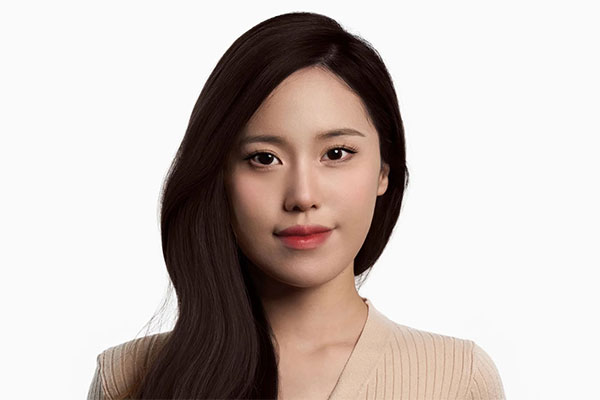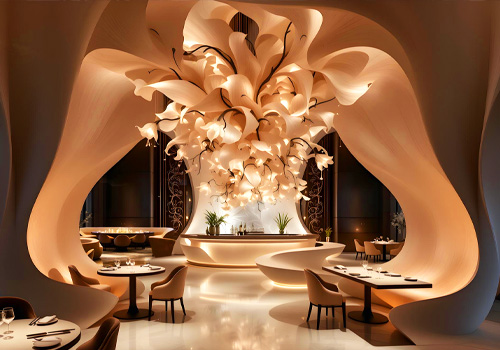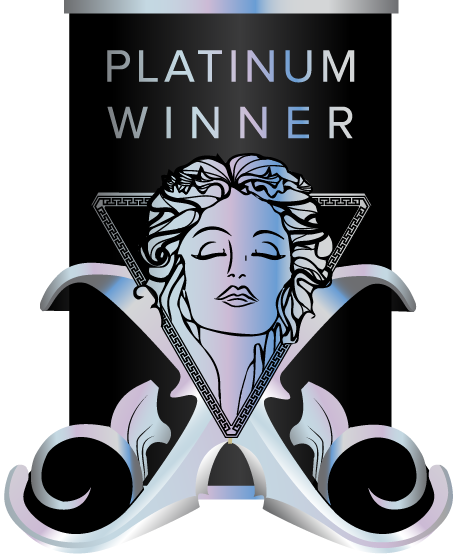
Interview
Wei Han Teng (Francine)
1 Congratulations on winning the MUSE Design Awards! Can you introduce yourself and share about what inspired you to pursue design as a career?
Thank you! I’m Francine Teng, an interior designer and project manager based in New York, specializing in high-end hospitality, residential, and commercial projects. I’ve designed award-winning spaces recognized for their innovation, emotional impact, and cultural relevance, collaborating with international teams across the U.S., Asia, and the Middle East. What inspired me to pursue design was the transformative power of space, how a well-designed environment can shape emotion, behavior, and connection. I was fascinated by how light, texture, and proportion can quietly influence human experience. That realization led me to approach design as both an art and a responsibility, crafting spaces that are not only visually refined, but deeply resonant and meaningful.
2 What does being recognized in the MUSE Design Awards mean to you?
Being recognized by the MUSE Design Awards is an incredible honor. These awards affirm the creativity, innovation, and conceptual integrity of my design vision on an international stage. As a designer, it’s fulfilling to see my ideas celebrated for pushing boundaries, and this recognition motivates me to continue exploring bold, experiential narratives through design. It’s also a significant milestone that highlights my growth as an interior designer in the field.
3 How has this achievement impacted your career, team, or agency, and what opportunities has it brought so far?
Winning multiple MUSE Design Awards has elevated my visibility within the industry and positioned me as a designer and manager at the intersection of luxury design, cultural storytelling, and sustainability. It has led to increased interest from collaborators, media outlets, and professional networks. It also supports my role as a design lead on high-profile developments and complements the strategic direction I bring to complex, large-scale projects.
4 What role does experimentation play in your creative process? Can you share an example?
Experimentation is essential to my design methodology. It allows for innovation that’s both intentional and poetic. In my educational museum project, for example, I explored layered transparency, dynamic lighting, and curated material contrasts to symbolize transformation and growth—mirroring the project's conceptual themes around education and evolution. Prototyping and sensory testing helped translate abstract ideas into spatial reality.
5 What's the most unusual source of inspiration you've ever drawn from for a project?
One unexpected source was a traditional lantern festival I attended as a child. The interplay of shifting light, pattern, and silence during that event profoundly influenced the lighting and materials palette for my awards-winning project, Golden Plaza. I sought to reimagine that sense of wonder in a modern, hospitality context through reflective surfaces, subtle glow, and rhythmic ceiling articulation.
6 What’s one thing you wish more people understood about the design process?
That impactful design is never accidental; it’s the product of layered research, emotional intelligence, cultural sensitivity, and strategic planning. Every element is intentional, from the placement of light fixtures to the acoustic balance of a space. Design is not just about aesthetics; it's about shaping how people feel, move, and interact.
7 How do you navigate the balance between meeting client expectations and staying true to your ideas?
I approach every project as a collaborative journey. My role is to listen, interpret, and elevate the client’s vision through a design lens rooted in expertise and intention. By aligning their goals with a curated narrative, I guide the process while preserving creative integrity. The key is trust, transparency, and framing each design decision in terms of purpose and experience.
8 What were the challenges you faced while working on your award-winning design, and how did you overcome them?
One of the main challenges was establishing a balance between visual drama and spatial harmony. For Golden Plaza, integrating luxury elements like crystal detailing and metallic finishes required a careful choreography of lighting, proportion, and materials. I overcame this through iterative modeling, scaled mock-ups, and a strong commitment to restraint, refining the palette until every gesture felt intentional and evocative.
9 How do you recharge your creativity when you hit a creative block?
I immerse myself in cross-disciplinary inspiration, whether it’s visual art, film, architecture, or literature. I also find that physical movement, such as walking in nature or visiting a new part of the city, helps unlock new ideas. Taking a step back often gives me the clarity to approach a design from a fresh perspective.
10 What personal values or experiences do you infuse into your designs?
Empathy, curiosity, and cross-cultural insight are central to my work. Having lived and worked in both Asia and the U.S., I bring a nuanced understanding of how people from different backgrounds experience space. My work reflects a commitment to creating meaningful, inclusive environments that balance emotional depth with spatial clarity.
11 What is an advice that you would you give to aspiring designers aiming for success?
Build your own design identity, and don’t wait for permission to express it. Cultivate curiosity, develop resilience, and stay connected to what moves you emotionally. Document your process and share your voice through personal projects; they often become the most powerful vehicles for recognition and growth.
12 If you could collaborate with any designer, past or present, who would it be and why?
I’d love to collaborate with Jean Nouvel (there are so many incredible designers I admire!). His visionary approach to architecture, where every project responds uniquely to its context, deeply inspires me. I admire how he uses light, contrast, and scale to create drama and emotion within a space. His designs are not only bold and poetic but also highly conceptual, often blurring the line between architecture and art. Collaborating with him would be a masterclass in storytelling through spatial experience—something I strive for in every project.
13 What's one question you wish people would ask you about your work, and what's your answer?
I wish more people asked, “What long-term feeling do you want your design to leave behind?” My answer would be: I want people to feel remembered. Whether it’s calm, inspiration, or awe, I design spaces that stay with people long after they leave. That’s when I know a project has truly succeeded.



